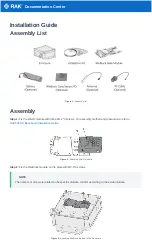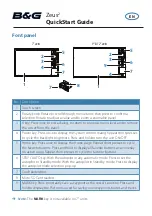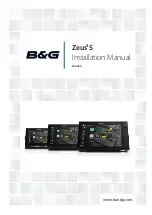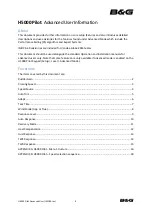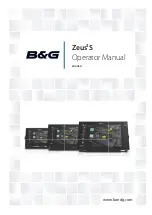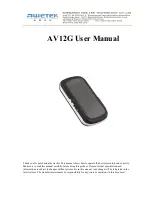
Introduction
1
Re
lian
ce
F
und
ame
n
tals
In
tr
o
d
u
cti
o
n
1
Introduction
The Z-Eurocard and Z-Sensor are two different form-factors for the newest generation of
Ashtech Z-12 receiver. The Z-12 receiver tracks all the available signals from GPS
satellites, both C/A and P code, both L1 and L2 frequencies, whether or not AS (“Anti-
Spoofing” or encryption) is on or off. The benefit of a dual-frequency receiver is that it is
excellent for RTK (Real Time Kinematic) applications, especially on longer baselines.
RTK is typically used where centimeter position accuracy is required in real time.
The Z-Family of receivers includes the Z-Eurocard, Z-Sensor, Z-Surveyor and Z-FX. This
manual covers the Z-Eurocard and Z-Sensor. These two receivers have been built
specifically with real-time industrial applications in mind, such as machine control in
construction, mining and precision agriculture; as well as precision navigation
applications like docking, and dredging. The Z-Eurocard and Z-Sensor are built to
withstand the extremely high vibration requirements in their target application. They also
provide positions at very high updates and low latencies, required in control applications.
The Z-Eurocard is mechanically and electrically compatible with the Ashtech GG24
GPS+GLONASS Eurocard, and the GG-RTK Eurocard. Thus once you have integrated
one of these, you have essentially integrated them all. The same is true of the Z-Sensor,
GG24 Sensor and GG-RTK Sensor.
Throughout this manual, the terms “Z-Eurocard” and “OEM board” are used interchangeably. Because
this manual describes both the Z-Sensor and the Z-Eurocard, the term “Z-receiver” will refer to both
products.
Overview
The Z-receiver processes signals from the GPS satellite constellation. The Z-receiver
provides real-time position, velocity, and time measurements using 36 dedicated separate
and parallel channels, 12 each for Coarse/Acquisition (C/A) code-phase, and carrier-phase
measurement on the L1 (1575 MHz), and Precise (P) code phase and carrier phase
measurement on L1 and L2 (1227 MHz) bands. The Z-receiver receives satellite signals
via an L-band antenna and low-noise amplifier (LNA). The Z-receiver operates stand-
alone, and as a base (reference) station or remote (rover) station providing real-time
differential GPS operation for code and real-time kinematic (RTK) operation for carrier
phase. The unit implements the RTCM SC 104 V2.2 standard for differential and RTK
operation, including the newly defined message types 18, 19, 20, and 21. These features
allow the Z-receiver to achieve centimeter accuracy while being compatible for
Summary of Contents for Z-eurocard
Page 4: ...iv Z Sensor and Z Eurocard Operation Manual...
Page 8: ...viii Z Sensor and Z Eurocard Operation Manual...
Page 10: ...x Z Sensor and Z Eurocard Operation Manual...
Page 18: ...8 Z Sensor and Z Eurocard Operation Manual...
Page 34: ...24 Z Sensor and Z Eurocard Operation Manual Figure 2 11 Z Sensor Development Kit B...
Page 35: ...Equipment 25 Equipment Figure 2 12 Z Eurocard Development Kit A...
Page 36: ...26 Z Sensor and Z Eurocard Operation Manual Figure 2 13 Z Eurocard Development Kit B...



























